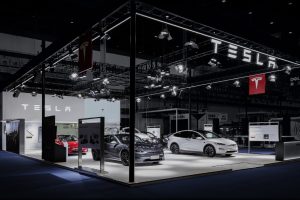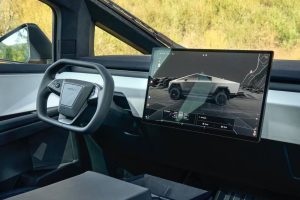- 🚗 Toyota is set to adopt Tesla-style gigacasting technology at its Aichi production center this year.
- 💸 The technology aims to reduce electric vehicle production costs for Toyota.
- 🏠 Toyota’s giga press, produced by Ube Machinery, will be one of Japan’s largest with 9,000 tonnes of pressure.
- 🚙 Gigacasting can create large vehicle components, reducing parts and optimizing production efficiency.
- 🔗 Toyota’s gigacasted parts will initially be used for the Lexus LF-ZC, slated for 2026.
- 📉 The gigacast technology won’t be used in mass production vehicles yet, focusing on prototypes and lower volume cars.
In a groundbreaking move, Toyota is poised to revolutionize its electric vehicle production by adopting Tesla-style gigacasting technology at its Aichi production center. This strategic decision marks a pivotal shift in manufacturing processes, promising to reduce production costs significantly and enhance efficiency. But what exactly does gigacasting entail, and how will it impact Toyota’s future EV models like the Lexus LF-ZC?
Understanding Gigacasting and Its Implications
What is Gigacasting?
Gigacasting is a manufacturing process that was popularized by Tesla, involving the use of high-pressure molds to cast large aluminum components. This innovative technique allows for the creation of considerable vehicle parts from molten aluminum, which remarkably reduces the number of components needed in assembly. Not only does this streamline production, but it also enhances vehicle efficiency by reducing their overall mass.
Why Toyota is Adopting Gigacasting
- Cost Efficiency: By integrating gigacasting technology, Toyota aims to lower its EV production costs. The streamlined manufacturing process allows for fewer parts, which reduces assembly time and labor costs.
- Enhanced Vehicle Performance: The reduction in parts can also lead to lighter, more efficiently performing vehicles, aligning with global demands for eco-friendly transportation.
- Strategic Positioning: As the auto industry rapidly shifts towards electric vehicles, staying competitive means innovating manufacturing processes. Gigacasting positions Toyota to compete directly with pioneers like Tesla who have already mastered this technology.
Toyota’s Giga Press: Size and Capability
Toyota has commissioned one of Japan’s largest giga presses, capable of exerting 9,000 tonnes of pressure. Manufactured by Ube Machinery, this behemoth will enable Toyota to create substantial and complex components in one stroke, showcasing their commitment to advancing manufacturing technology.
The Future of Lexus LF-ZC with Gigacasted Parts
The upcoming Lexus LF-ZC, set to debut in 2026, will be one of the initial models to benefit from gigacasted parts. Here’s what we know:
- Segmented Design: Just like Tesla’s Model Y, the LF-ZC will be designed with front, center, and rear segments that utilize gigacasting.
- Prototype and Lower Volume Focus: Initially, the technology will not be implemented for mass-produced vehicles. Instead, it will focus on prototype components and vehicles with lower production volumes to refine and perfect the process.
Challenges and Considerations
While this technological shift promises many advantages, there are challenges to consider as Toyota transitions to gigacasting:
- Initial Setup Costs: The transition to such advanced manufacturing requires considerable investment in new machinery and training for personnel.
- Quality Control: Ensuring consistent quality with such massive components demands rigorous testing and new quality assurance practices.
- Supply Chain Adjustments: Moving away from traditional manufacturing could require adjustments to Toyota’s supplier relationships and materials sourcing.
Comparing Tesla and Toyota’s Approaches
Both automotive giants are leveraging gigacasting, but there are distinctions in approach and execution:
- Tesla: Focused on expanding its gigacast technology across its range, emphasizing mass production with efficiency and consistency.
- Toyota: Taking a calculated, albeit slower approach, by initially integrating the technology in prototypes and exclusive models like the Lexus LF-ZC.
Conclusion
Toyota’s adoption of gigacasting stands as a testament to the evolving landscape of automotive manufacturing. By taking cues from Tesla, Toyota is setting itself up for success in the electric vehicle market, aspiring not just to meet the future needs of consumers but to redefine how vehicles are made. This move could very well set a new standard across the industry, encouraging other automakers to rethink and innovate their production methodologies.





